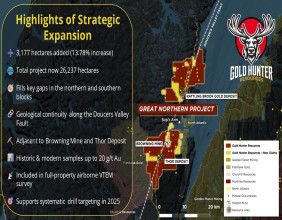Highlights
-
Acadian Timber Corp. operates in the Canadian materials sector, with a focus on forestry and timberland.
-
Executive compensation structure includes both fixed and variable components tied to company metrics.
-
Shareholder returns and peer comparisons offer further insights into pay alignment.
Acadian Timber Corp. (TSX:ADN) is part of the S&P/TSX SmallCap Index and operates within the materials sector, primarily managing timberlands and producing forestry-related products. With a focus on sustainable forest management across Eastern Canada, the company supplies softwood and hardwood logs to regional customers. Its inclusion in the Canadian materials sector places it among firms involved in resource extraction and processing.
Executive Pay Structure and Governance
Executive compensation at the company includes a base salary, incentive-based bonuses, and other performance-linked benefits. These components are commonly structured through board oversight to align with operational goals. The pay design reflects various factors such as financial results, operational efficiency, and adherence to sustainable forestry standards.
Performance Alignment and Sector Positioning
The relationship between executive pay and operational results can be assessed through relative performance. In periods of consistent production levels or stable pricing environments, compensation adjustments often mirror the company’s standing in the sector. This practice is widely observed among firms within the materials industry.
Shareholder Value Trends
Shareholder returns provide another dimension to assess how executive pay compares with broader outcomes. Market capitalization changes, dividend history, and total return over a set timeframe are frequently examined across peer companies. Such comparisons provide a baseline to understand how pay structures correspond with shareholder experiences in the sector.
Compensation Transparency and Market Comparison
Public disclosures of executive pay allow for comparisons across listed companies. Transparency in remuneration policies is maintained through regulatory filings and governance practices. These comparisons help contextualize pay levels, especially when evaluated alongside similar companies within the same index or materials sub-sector.




